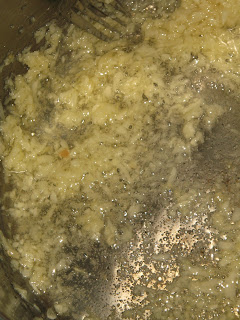It rained for weeks, and floodwaters had no chance to drain out to sea for the better part of that time, for the sea had encroached on the land. It was like old times in Pangasinan, although we were rarely flooded, and the wind wasn't as uninihibited as it gets now.
We called this season nepnep, when it rained continuously, and the sun couldn't so much as peep out for days and days. A thick blanket of water pouring from the sky enveloped everything outside the house. We woke up to cold, wet mornings that were slow to relinquish the dark of night.
It was the season of indoor games, and scary stories told by candlelight. And it was probably because of these reasons that I feel secure when it rains. Ironic, with all its metamorphoses into constant tragedies and sorrows. But for me it meant spending time with my family, for entire days and nights, confident in our ability to stay together no matter what happened outside.
We subsisted on fare not otherwise preferred - dried, salted fish generally termed tuyo, scrambled eggs, and that thick, bland soup of paper-thin noodles called misua. These had been elevated to comfort food status for me, too.
Back in my childhood the only misua there was were those fine white noodles coiled like the long, white tresses of a grandmother. It crumbled to ivory dust by a slight pressure of the fingertips, and cooked into a phlegmy soup. It slipped from forks, and whipped lips and chins. It was fun to slurp.
There would always be a thick lump of noodles that failed to separate in the time it was made to simmer at the bottom of the bowl. When the soup turned cold it congealed and turned into paste.
There would always be a thick lump of noodles that failed to separate in the time it was made to simmer at the bottom of the bowl. When the soup turned cold it congealed and turned into paste.
It is made mainly with flour, water and cornstarch, and it tastes like so. But its absence of flavor makes it the vesatile background for a flurry of additions. The most common is patola, sliced thinly and increasing the phlegmy texture of the soup. But I hated patola, mild-tasting as it is, and thankfully we never had it at home.
Another common flavoring is peeled small shrimps, the head and shells pounded in a mortar to extract the juice. Fried tinapa, too, flaked finely, but it's uncommon when the sun cannot shine. If these are inaccessible there are always the canned goods versions. Corned beef misua, flecked with red. Sardine misua, orange like the imagined sun.
But when all else is missing, just finely minced garlic will suffice. Saute, add boiling water, then add the noodles. If there is an egg, it is cracked into the pot just before the fire is turned off, and stirred so it turns the soup milky and rich. Eaten scalding hot, it warms and soothes.
I live for garlic, and I always have a bottle of it finely pounded and fried, for sprinkling into almost anything I eat. But it stands out in arroz caldo, and in misua, crackly and peppery amidst the soft yield of the rice and noodles.
But nowadays I prefer buying the egg misua, sold in groceries and supermarkets alongside the lola locks kind. It needs no added sahog, for it tastes delicious unaided. The noodle strands are thicker and sturdier.
But I still encounter the crumbly misua, and there is a batchoy I like made at our office canteen, chopped pork and liver boiled with ginger and sili leaves, salted and peppered and made thick by misua.
And I buy my childhood misua still. It comes in handy when I crave comfort. Particularly now that a thin filament of cold has lodged into my heart as I grieved with the rest of the country. It was a difficult time, actually, these last three weeks, when too many disasters converged. A friend and a constant visitor to our house was finally given up by the sea, ending hopes of him coming home alive. Then a classmate of my husband figured in an accident on the way to the biggest rescue operation in years.
So even though the sun is out a bit now, and the glory of the blue moon is unblemished by racing clouds, I still have misua. I have stocks of it, in varying degrees of thinness, white and gold and everything in between. I foresee the need for misua for months to come.
Related Posts










6 comments:
sir/maam:
thank you for the great posts..i am subscribed to your blog and always thrilled to read your new articles
- engineer from dagupan :)
dapat may patola at tuhoy. clams either in its shell or harvested and wrapped in a leaf. the clam juice adds another dimension to the soup stock aside from the shrimp.
Thanks for subscribing, Engineer from Dagupan. Hope the storms didn't do too much harm there.
Tuhoy, clams wrapped in a leaf? Wow, that's exotic. Will have to try that one!
Kai, I'm so sorry to hear about the loss of your friends. The first thing my Mom asked when I told her about the flooding in the Philippines was to know if you were okay. The noodles sound comforting.
Mrs. L, thanks. I'm sure your mom would remember the noodles.
i love this post, with its many layers of meaning, range of emotions, all together like bouillabaise in a bowl of miswa, childhood food of comfort.
-lou
Post a Comment